Last Updated on May 16, 2023 by motologs
The road trip to Muktinath in Nepal is the most adventurous experience I had in my life. Muktinath is deservedly the place of ‘Moksha’ where one attains liberation. Muktinath Temple is the highest religious location in the world. In this blog post, you will find all the relevant and up-to-date information to make a successful Muktinath Road Trip. An informative and detailed Muktinath Travel Guide – India to Nepal Road Trip.
Muktinath is a sacred site for both Hindus and Buddhists, located in the Mustang district of Nepal. It is a popular destination for pilgrims and tourists alike, who come to admire its stunning natural beauty and religious significance. A road trip to Muktinath offers an unforgettable experience, taking you through rugged mountain landscapes, charming villages, and ancient temples. Whether you’re a spiritual seeker or an adventure enthusiast, a Muktinath road trip is sure to be an unforgettable journey.
Page Contents
Intro to Muktinath
Hindus and Buddhists revere Muktinath as one of their holiest sites. Its oldest mention dates back to the 7th century. The Muktinath Temple is the abode for Hindu God, Vishnu. Buddhists refer to Muktinath as ‘Chumig Gyatsa’ which means Hundred Waters in Tibetan. They believe the deity to be an avatar of Avalokiteśvara. At Muktinath, a perpetual flame known as Jwaladevi has been burning continuously for thousands of years. The road leading to Muktinath is one of the most adventurous trails in Nepal.
Muktinath Altitude and Location
The altitude of Muktinath in Nepal is 3800 meters. Muktinath is located in the Muktinath Valley, at the foot of the Thorong La mountain pass (5,416 m) in the Annapurna region of Mustang, Nepal. Kali Gandaki River originates from Nhubine Himal Glacier and flows through Mustang Valley around Muktinath. The Kali Gandaki riverbed is full of pre-historic fossils. The most popular and holy form of fossil stone called ‘Shaligram’ is exclusive to this area. The river gorge of Kali Gandi is regarded as the deepest gorge in the world. Muktinath is an important part of the Annapurna Circuit. Anyone doing Annapurna Circuit Trek will pass through Muktinath.
Best Time to Visit Muktinath – Muktinath Weather
Ideally one should visit Muktinath around March-June or September-November for the best weather and temperature. During the monsoon season, the roads are extremely dangerous and mostly blocked due to landslides. In December it gets well below freezing point. In January and February Muktinath receives a lot of snowfall. The temperature plummets to -20°C, well below the freezing point in January.
We went to Muktinath around December end and barely survived through the night. The cold was beyond what we presumed. Extreme cold and high altitude low oxygen environments will make you hallucinate. We ended up sleeping with our full jackets and shoes on. Despite two layers of thermal quilts and blankets, we were shivering to the bone. However, December will present you with the clearest of skies and lesser tourists. To witness so many stars in the night sky was an experience like no other. Cosmic feelings. The snowy peaks and mountains start to reflect a dazzling golden hue in the evening.
How to Reach Muktinath
If you are starting from Kathmandu then reach Pokhara. Those who can not travel by road to Muktinath may take a flight to Jomsom and then rent a vehicle to reach Muktinath. There is a small airport in Jomsom by the river. But, in this post, we will focus on reaching Muktinath by road from India. To reach Muktinath one needs to start in Pokhara – the beautiful city of lakes. There is only one route to Muktinath. The route for Muktinath is Pokhara – Kushma – Khaniyaaghaat – Lungdi – Beni Bazar – Lete – Tukuche – Marpha – Syang – Jomsom – Ekle Bhattee – Kagbeni – Muktinath. We will come to this later in the post as it needs detailed guidance and information. Read on for Muktinath Travel Guide – India to Nepal Road Trip.
India – Nepal Border Crossing – India to Nepal Road Trip
Between India and Nepal, there are several border crossings where one can enter the country. It is important to choose the right border entry point when entering Nepal. Reach the nearest India-Nepal border crossing and then proceed to enter Nepal. The initial goal is to reach Pokhara in Nepal. The Sonauli-Siddharthanagar Border in Uttar Pradesh and the Raxaul-Birgunj Border in Bihar are the two major entry points to reach Pokhara from India. The Valmiki Tiger Reserve separates these two border entry points.
Our journey started in Muzaffarpur early at 5 am. After crossing Raxaul-Birgung Border we headed to Hetauda in Nepal. From there we drove to Pokhara, reaching around 10 pm. Due to inexperience, we made a technical mistake and picked Raxaul-Birgunj Border over Bhittamore Border Checkpost in the Sitamarhi District of Bihar. Although the distance is the same on both routes, Raxaul-Birgung Border being a major cargo and customs post, had a kilometers-long traffic jam. The road was dead and dusty. It took us over 2 hours to cross the border through this entry point. On the contrary, it took us only 5 minutes at the Bhittamore check post when going for the Mount Everest Road Trip.
Indians don’t need a visa or passport to enter Nepal. In this sense, Nepal is one of the most accessible countries for Indian nationals. You can read about the process and best locations to enter Nepal by road in this detailed article: India to Nepal by Road.
Documents and Bhansar Permit
There are a few important points that you should remember while visiting Nepal. When entering Nepal from India, there is a list of documents you should have with you. Even Indian citizens need to carry some valid documents to show at the India-Nepal border check post. The list of documents includes a valid photo ID card given by the government and all relevant documents for your vehicle. The ID card can be either a voter ID card or an Aadhar card. PAN Card is not a valid ID card. You can also carry your passport but it’s not necessary.
Indian citizens don’t need a passport to enter Nepal. This means you won’t have to get a visa or any prior permission to enter Nepal. However, a valid identification card will be checked at the border post. If you’re traveling to Nepal by bike or car then you must carry all the original documents. The documents include a Vehicle Registration Certificate, Driving License, Pollution Under Control Certificate, and valid Insurance. You should ensure that your vehicle insurance is valid for more than the expected duration of your stay in Nepal. Carry ID cards and some passport-size photographs of all the traveling members.
You will have to apply for Bhansar Permit at the border entry point. Bhansar is an entry permit for vehicles. You will also need special permits called TIMS and ACAP cards to enter Annapurna Conservation Region.
Money Exchange and Withdrawl – INR to NPR
In this section, you will find how to exchange Indian currency for Nepali currency. Indian currency is not officially accepted in Nepal except at the border posts for the Bhansar permit. After India introduced demonetization, Nepali businesses stopped accepting big denominations like Rs 200, Rs 500, and Rs 2000 in Nepal. Some of the restaurants and businesses may accept Rs 100 currency notes but that is limited to border areas only. Ensure that you withdraw or exchange enough money into Nepali currency before going into the mountains or far away from the border area.
ATM Withdrawl vs Money Exchange in Nepal for Indians
There are two options to get Nepali currency in Nepal. Either withdraw from Nepali ATM or carry Indian cash and exchange it locally.
ATM Withdrawl Charge for Indian Cards in Nepal
You can use Indian ATM cards to withdraw cash from Nepali ATMs. It must be a VISA or MASTERCARD approved for successful withdrawal. Most ATMs accept these two types of ATM cards. There will be steep ATM withdrawal charges in Nepali ATMs. We carried Indian SBI ATM cards and were charged around INR 200-400 for each withdrawal and an additional INR 50 for each transaction. 1 INR = 1.6 NPR. This implies, to withdraw NPR 10000 using an Indian ATM card you will be charged INR 6250 + INR 200 + INR 50 = INR 6500. The effective exchange rate between INR and NPR lowers to 1.53 after withdrawal charges are factored in. If you can exchange it at a better rate then do it in the border area without a second thought.
Money Exchange at India-Nepal Border
Earlier money exchange agents were sitting around the border area but the government cracked down on these illegal money exchanges. This doesn’t mean it stopped. However, we strongly advise using legal entities to exchange money. As you move up into the mountains and remote parts of Nepal, the acceptance of Indian currency will reduce. So you must withdraw or exchange enough money in the plains before entering the mountains. A very limited number of ATMs will be available in the mountains. Don’t risk yourself being stranded without money. Carry at least NPR 2000 per day per person of cash when traveling in Nepal.
Network Connectivity and Sim Card in Nepal
Indian SIM cards will stop working once you enter Nepal. You can get a local sim card and use it on your mobile. The network coverage is erratic and sparse, especially in the mountains. Plan your road trip accordingly. Do not expect WiFi in the mountains. Make sure you have all the research and route-planning materials you need on your smartphone. Download the detailed offline maps along with other relevant information that you will need on your road trip. Once you reach Muktinath, you will be able to access WiFi in a cafe or hotel, but the speed may be slow.
ACAP and TIMS Permit
Apart from all the documents, you will also need two special permits to enter Annapurna Region. These permits are called ACAP and TIMS. ACAP is Annapurna Conservation Area Permit and TIMS is Trekker’s Information Management System. These permits are required to reach Muktinath as it is located in the Annapurna region. There will be checking posts in the route where you need to show ACAP and TIMS cards. In case you are not carrying the required ACAP and TIMS card, it will be issued at the check post on the route at a slightly higher rate. There is no assurance that this will be given out right away at the checkpoint. Better to get it in Pokhara itself. We did not know about these permits but managed to get them at the Tatopani check post on the route.
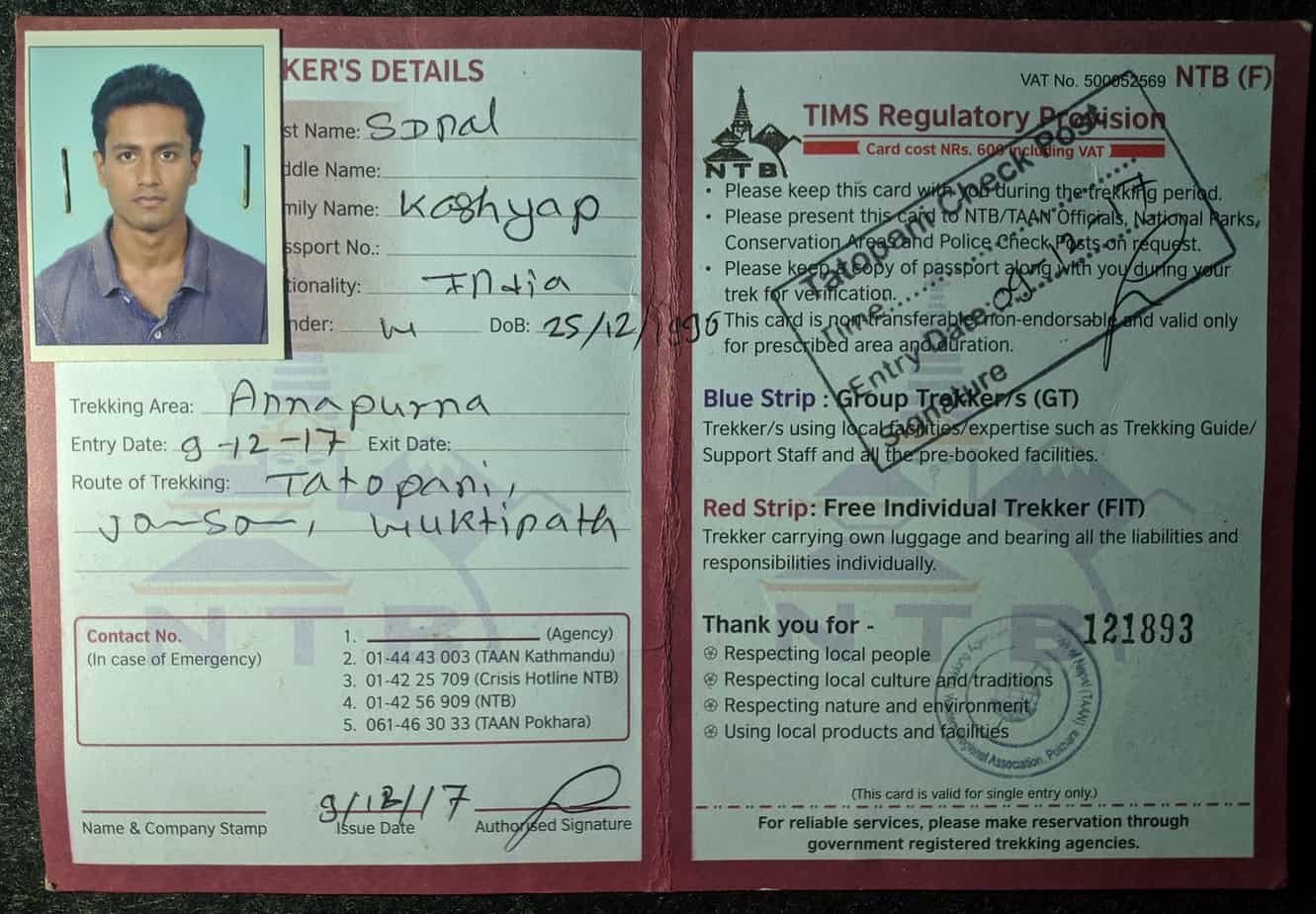
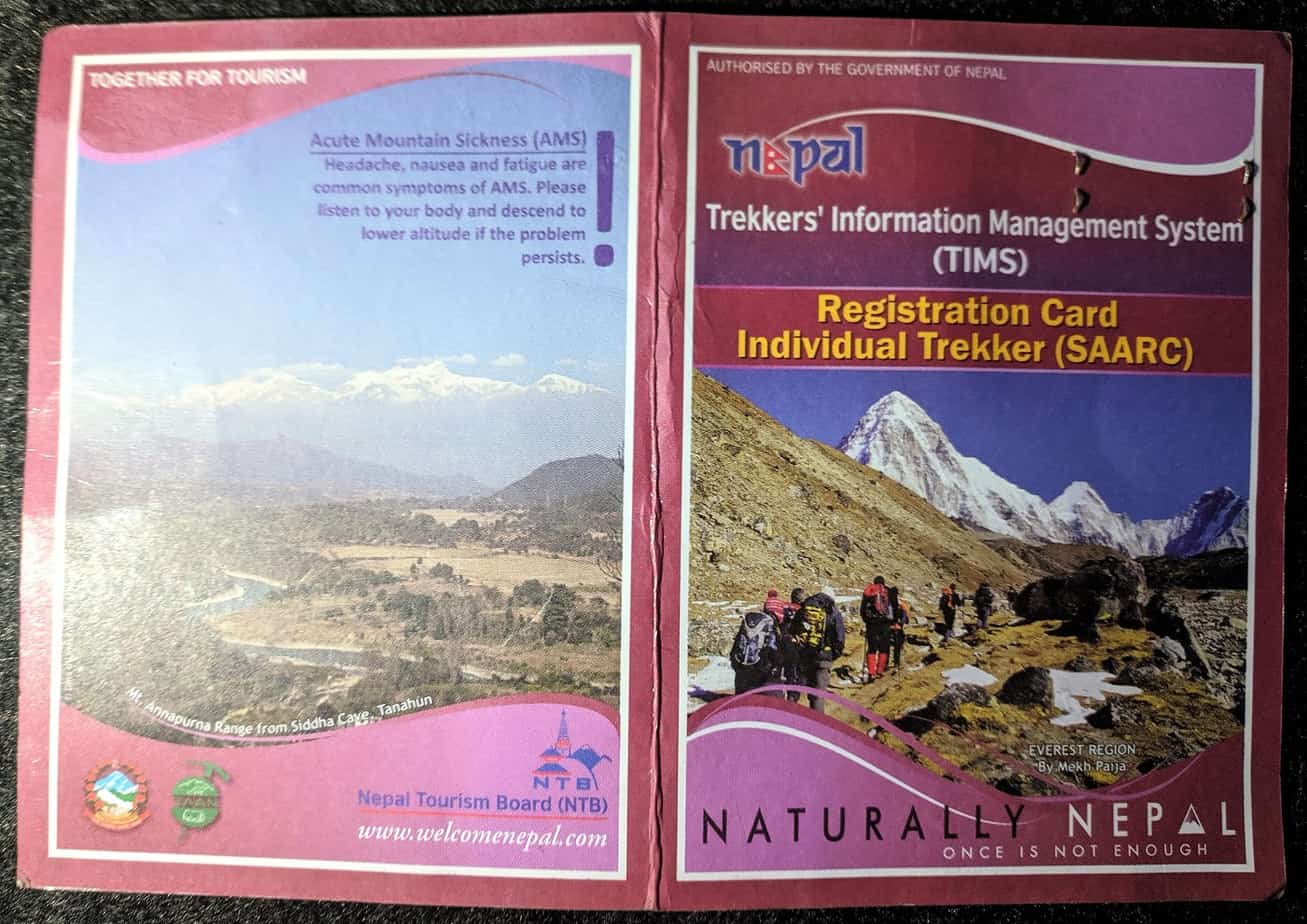
How to apply for ACAP and TIMS cards?
You can get ACAP and TIMS cards issued at Nepal Tourism Board, Pokhara between 10 am and 4 pm every day (Check location on Google Maps). It is a good idea to spend a day or two in Pokhara itself. You just need to fill out two forms to apply for both. The application form is available in the Tourist Board office. The TIMS card is just a receipt.
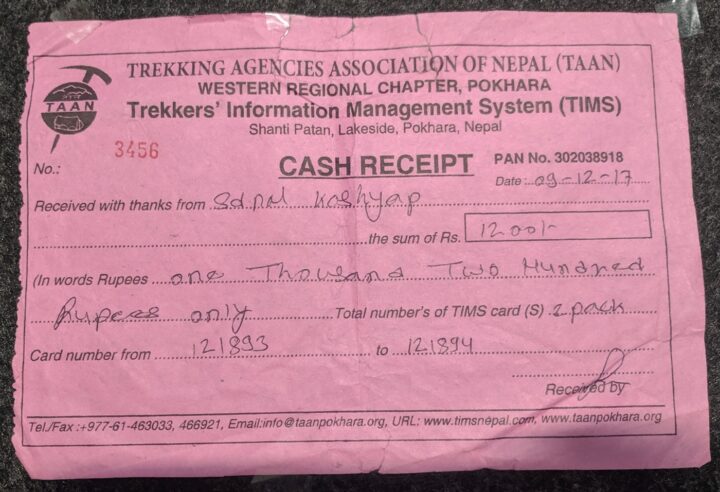
Fees and Charges for ACAP and TIMS card
| Type of Permit | Price for SAARC Nations (Indians) | Price for Foreigners |
|---|---|---|
| TIMS | NPR 300 (Group) NPR 600 (Individual) | NPR 1000 (Group) NPR 2000 (Individual) |
| ACAP | NPR 1500 | NPR 3000 |
Route to Muktinath – Road Status
There is just one motorable road to Muktinath from Pokhara. Review your route thoroughly on Google Maps in satellite mode before leaving Pokhara. This will help you understand the terrain on the route. The entire route is prone to frequent landslides and blockages. To avoid losing time on your road trip, leave early in the morning. As you climb higher altitudes the roads will become non-existent and you will be driving on a marked trail. Our Muktinath road trip was disrupted by landslides for a few hours at various locations. To make a successful trip this ‘Muktinath Travel Guide – India to Nepal Road Trip’ will help you plan well.
Route Map for Muktinath
There is only one road leading to Muktinath, so it is easy to follow. Just ensure that you download and save it on google maps for offline access. The Muktinath route passes through the following locations: Pokhara – Kushma – Khaniyaaghaat – Lungdi – Beni Bazar – Lete – Tukuche – Marpha – Syang – Jomsom – Ekle Bhattee – Kagbeni – Muktinath.
Distance of Muktinath from Pokhara
The total distance to Muktinath from Pokhara is 177 km. In the mountains, distance should not be measured in kilometers, but in hours. The roads are so bad that it took us over 14 hours over two days to get through this 177 km. Nevertheless, you can put some blame on our underpowered 150cc motorcycle. It added some additional fun and adrenaline to this adventure. You can watch the video of the entire Muktinath Road trip here on YouTube.
Condition of Muktinath Road
Once you leave Pokhara, there will be a steady climb to Muktinath. The road is fairly well maintained at the beginning but it gets bumpy once you are midway. Most of the roads in the mountains are bare rocky and it’s difficult to maintain them because of the frequent landslides with hostile geographical conditions. We would strongly advise planning your trip in the dry season. Even in the dry season, one needs to be a skilled driver to traverse through such tricky terrain. The roads are slippery and slushy in the mountains. There are long stretches of countless bad roads where you can’t drive above 15 kmph. You will have to cross several rocky riverbeds. You can get some idea of road conditions in the gallery below. The actual situation is worse than it appears.
Pokhara to Jomsom
The road condition is decent from Pokhara to Beni. Once you cross Beni Bazar, the roads turn into rocks and mud. The Beni-Jomsom road is one of the worst roads that we ever drove on. It was not dangerous but it almost broke our back. Big rocks were extruding through the road surface. At times we had to drive in low gear for kilometers. There was not a single patch where we could go above 30kmph. The roads turn from bad to worse as you gain altitude. There are no roads but only hardcore offroad trails.
Multiple small rivers cross through this area. We encountered at least 5 active landslides that delayed our journey. A better offroad capable bike will be extremely fun on these roads. If you are driving a four-wheeler (car or jeep) then it better be a four-wheel drive (4WD). One of the groups that stayed at our hotel came on a Mahindra Scorpio (2WD) and booked another 4WD after getting frustrated with the road condition. They left their 2WD vehicle at the hotel and made the remaining part of the journey on a rented 4WD vehicle.
Jomsom to Muktinath
Climbing up, the terrain becomes utterly lifeless. You will not find help for tens of kilometers if something goes wrong. After Jomsom, the mountains are dead and without a single tree or vegetation. It is a bizarre sight. The scenery makes you think you’re on another planet. There will be no signs of the road while crossing the colossal Kali Gandaki riverbed. Crossing the Kali Gandaki River is an adventure in itself. You’ll have to find the optimum route as the river will be flowing around in multiple channels. There was a mega-bridge under construction. The entire route is accident-prone and a high degree of driving experience is required to make a successful trip.
Once you cross the Kali Gandaki river bed in Jomsom, there is an extremely steep climb to Muktinath. However, we were positively shocked to see a well-made road to Muktinath. After struggling against the odds for two days it was deeply satisfying. The final ‘Muktinath Sadak’ is made above 4000m and looked as good as a runway in the airport. The last 11 km of road is made in heaven. Our only struggle was strong crosswinds that almost blew us away.
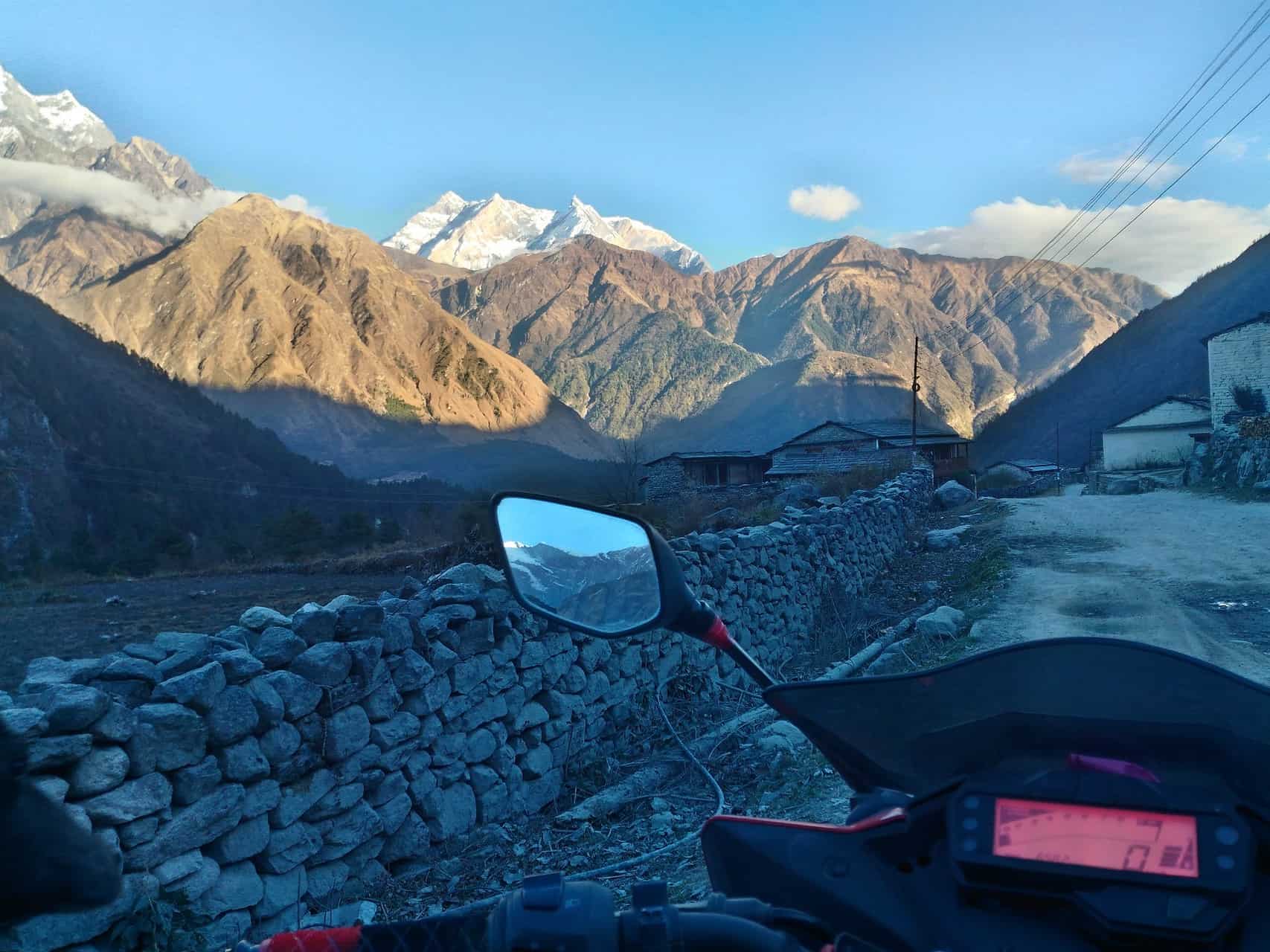
Fuel Station on Muktinath Route
Fuel is an important factor on any road trip. You must plan judiciously to ensure that you don’t run out of fuel on the way to Muktinath. Once you get into the mountains there will be just a few fuel stations. Plan your trip accordingly. Carry at least a gallon of fuel for emergency use in a spill-proof container. Check the location of all the fuel stations in the route on Google Maps before you start your road trip to Muktinath. Despite this, be warned that some of the fuel stations may be temporarily or permanently closed. It is important to fill your tank to the full at the closest fuel station that you find. Every fuel station in the remote mountains is an opportunity to fill up your tank. In case you are out of fuel wait for some local to arrive and help you out.
Where to stay in Muktinath Trip?
It is important to start early in the morning to finish your trip by late afternoon or before daylight fades. This will ensure a safe road trip protocol. It’s a bad idea to ride in the mountains at night, regardless of how experienced you are. Driving after sunset should only be done for emergencies. There are plenty of Lodges and small Hotels scattered on the Beni-Jomsom Sadak. Taking proper rest is essential for your safety. Remember, it’s not a race. The lodges that we stayed at were decent and clean. The average price was around NPR 500 for two a night. This goes up in peak tourist season.
What to eat on Muktinath Trip?
You will get a delectable ‘Dal-Bhat’ Nepali meal at the place where you stay. Food quality is satisfactory and affordable. Of course, there is not a lot to choose from but it does the job. We paid on average NPR 120 for a meal. Dal Bhat is the staple food in entire Nepal. The meals are simple but tasty, and they give you enough energy for the day. Carry enough dry fruits and other high-energy edible items for consumption.
Things to Do in Muktinath
- Visit all temples and monasteries.
- Enjoy the Sunset and Sunrise view.
- Shop local Handicrafts.
- Collect Shaligram fossils.
- Go for local treks.
- Drive around for spectacular views.
- Stargazing at night.
- Donkey rides around the Town.
- Enjoy the off-road adventure.
Itinerary for Muktinath Road Trip
Ideally, you should apply for a 12 to 15-Day Bhansar Permit to cover an extended road trip. Muktinath Road Trip can be done in 5 days if there are no roadblocks. Keep additional two days to get the ACAP and TIMS permit in Pokhara. You can also spend a day or two exploring Pokhara before traveling to Muktinath.
Additional Tips for Road Trips in Nepal
Don’t gain a lot of altitude in a single day without rest. A sudden difference in altitude without the body getting rest will result in ‘Altitude Sickness’ and will ruin your road trip. It is important to make stopovers and allow the body to adjust to low oxygen at high altitudes. Carry Road Trip Emergency Medical Kit with you on all road trips and journeys. International travel insurance is a must on any road trip to Nepal from India. Travel Insurance costs just a few hundred rupees but financially covers untoward incidents on the road trip.
This concludes our Muktinath Travel Guide – India to Nepal Road Trip. Feel free to ask any doubt or query in the comments below and we will help you with a response.
Additional Resources
Official Website for Nepal Tourism Board
 MOTOLOGS Road Trip and Travel Guide
MOTOLOGS Road Trip and Travel Guide 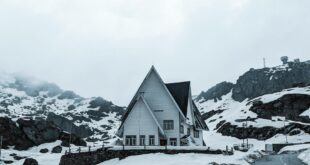
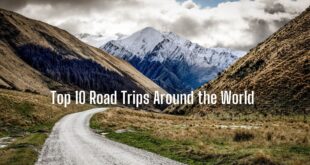
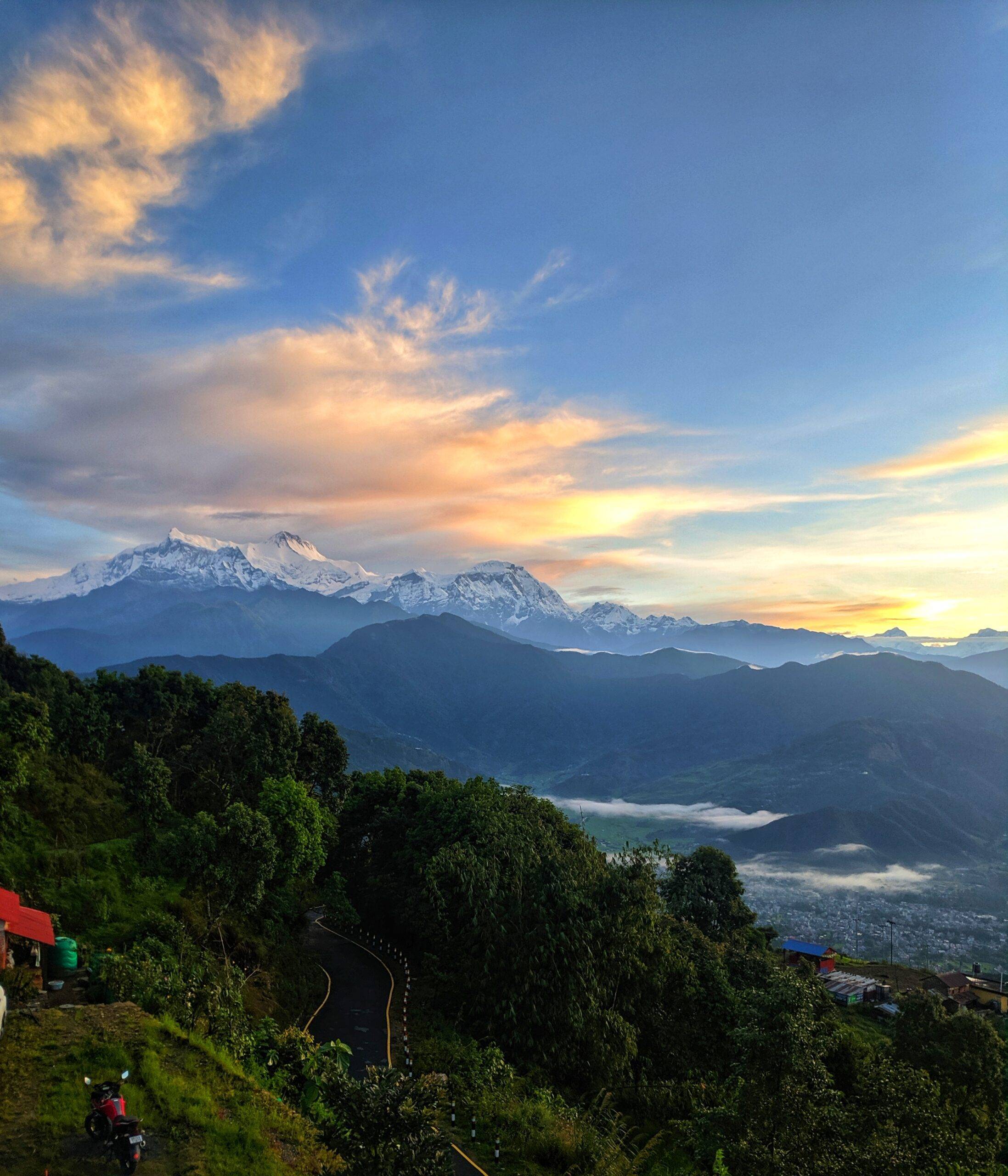
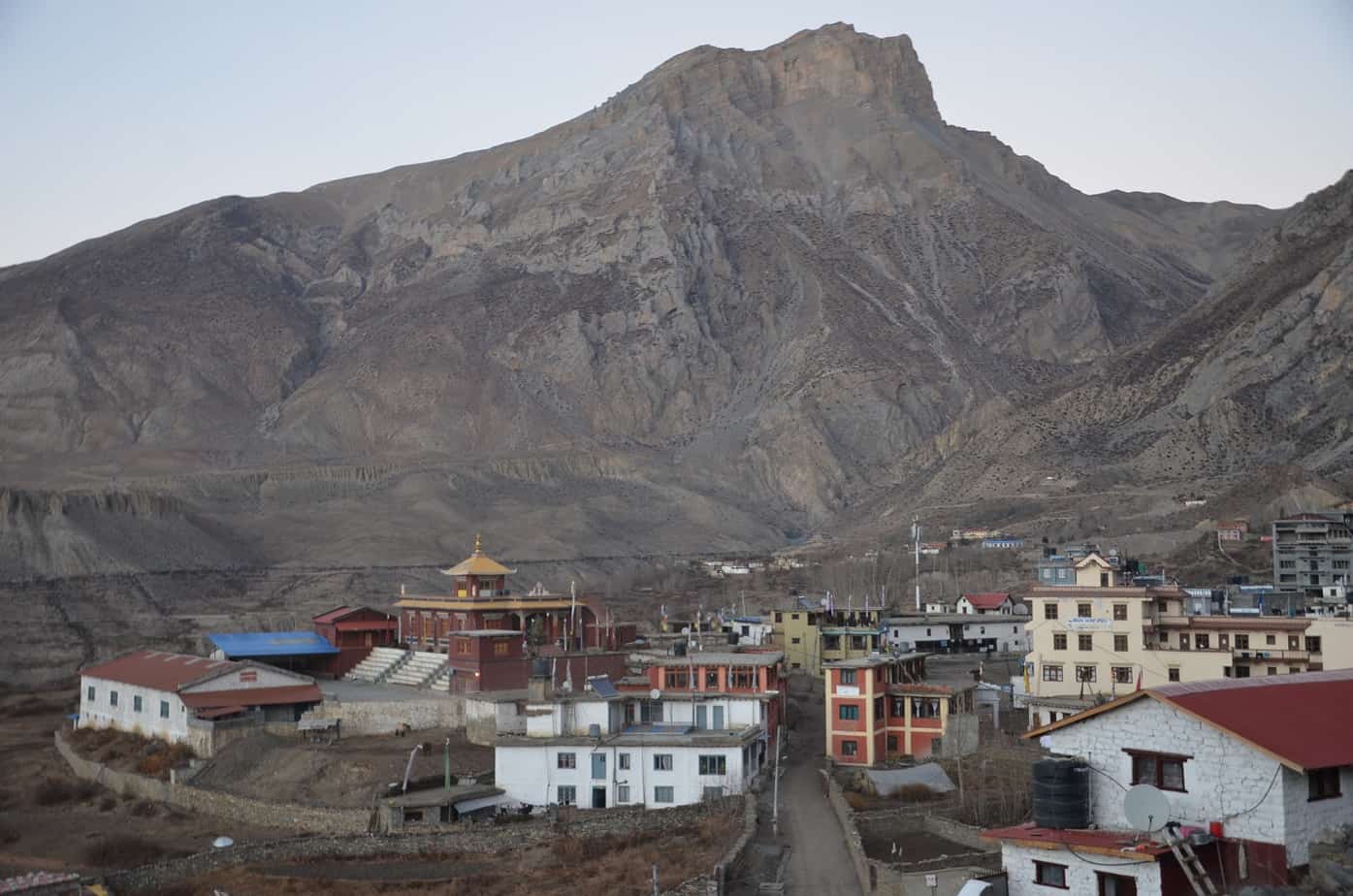
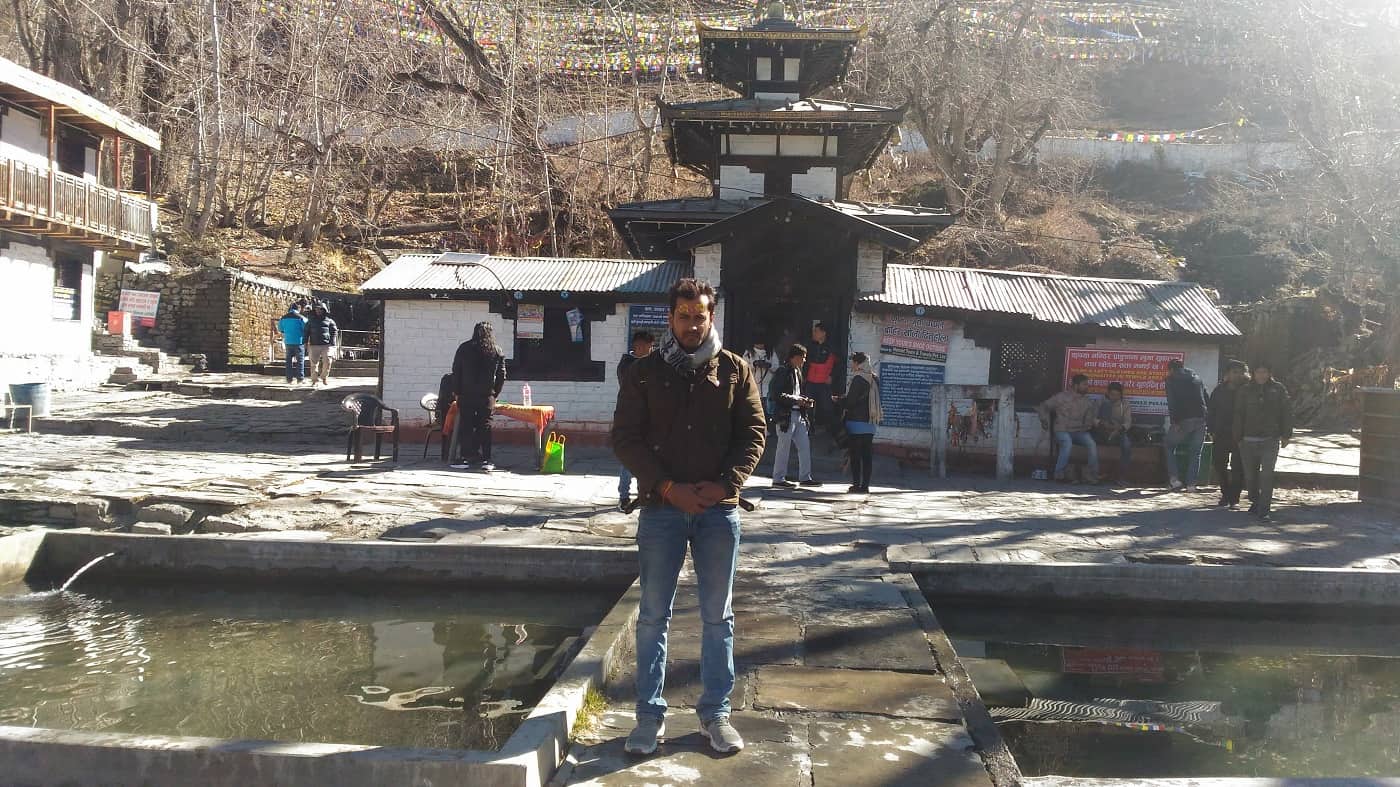

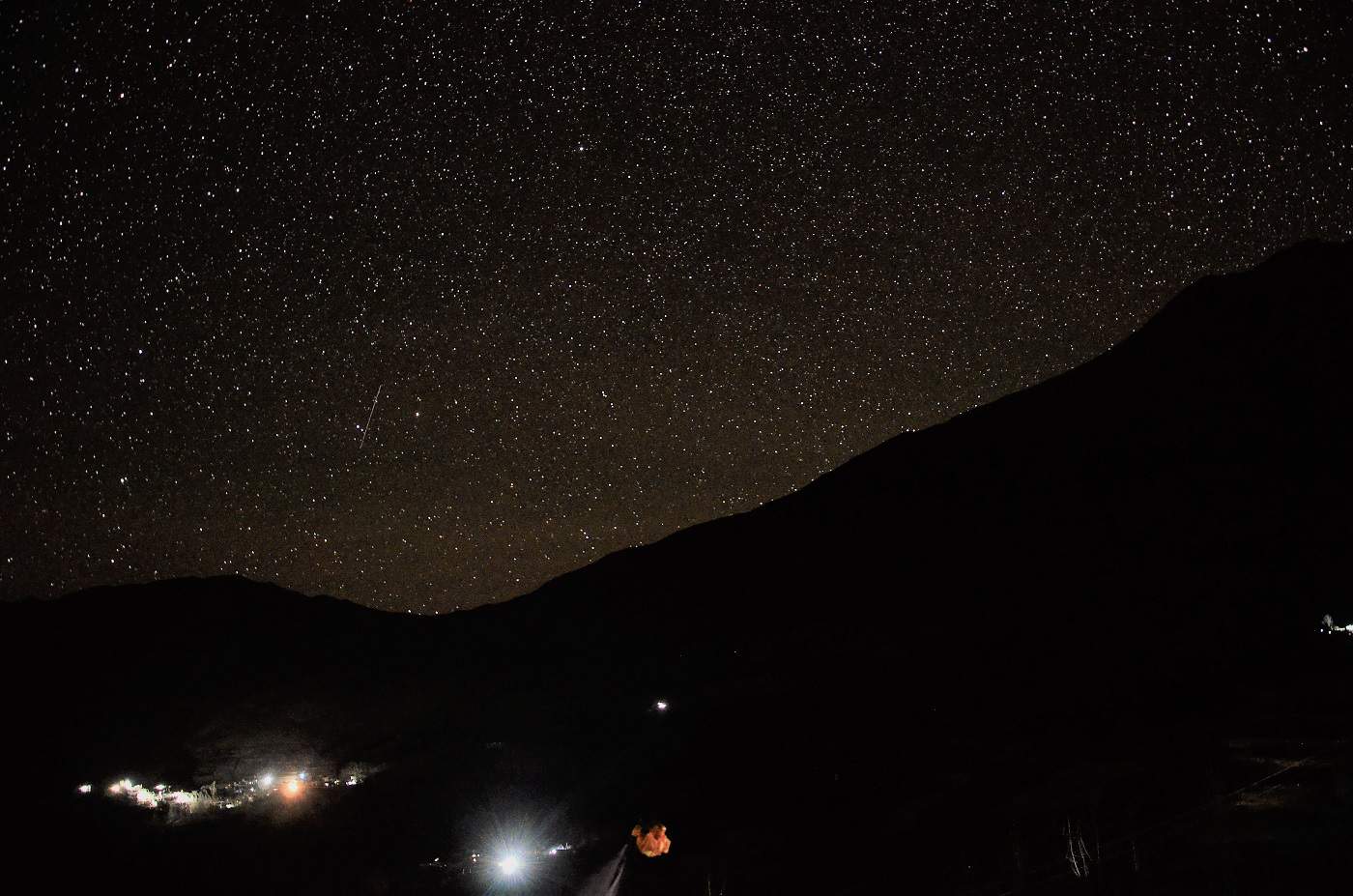
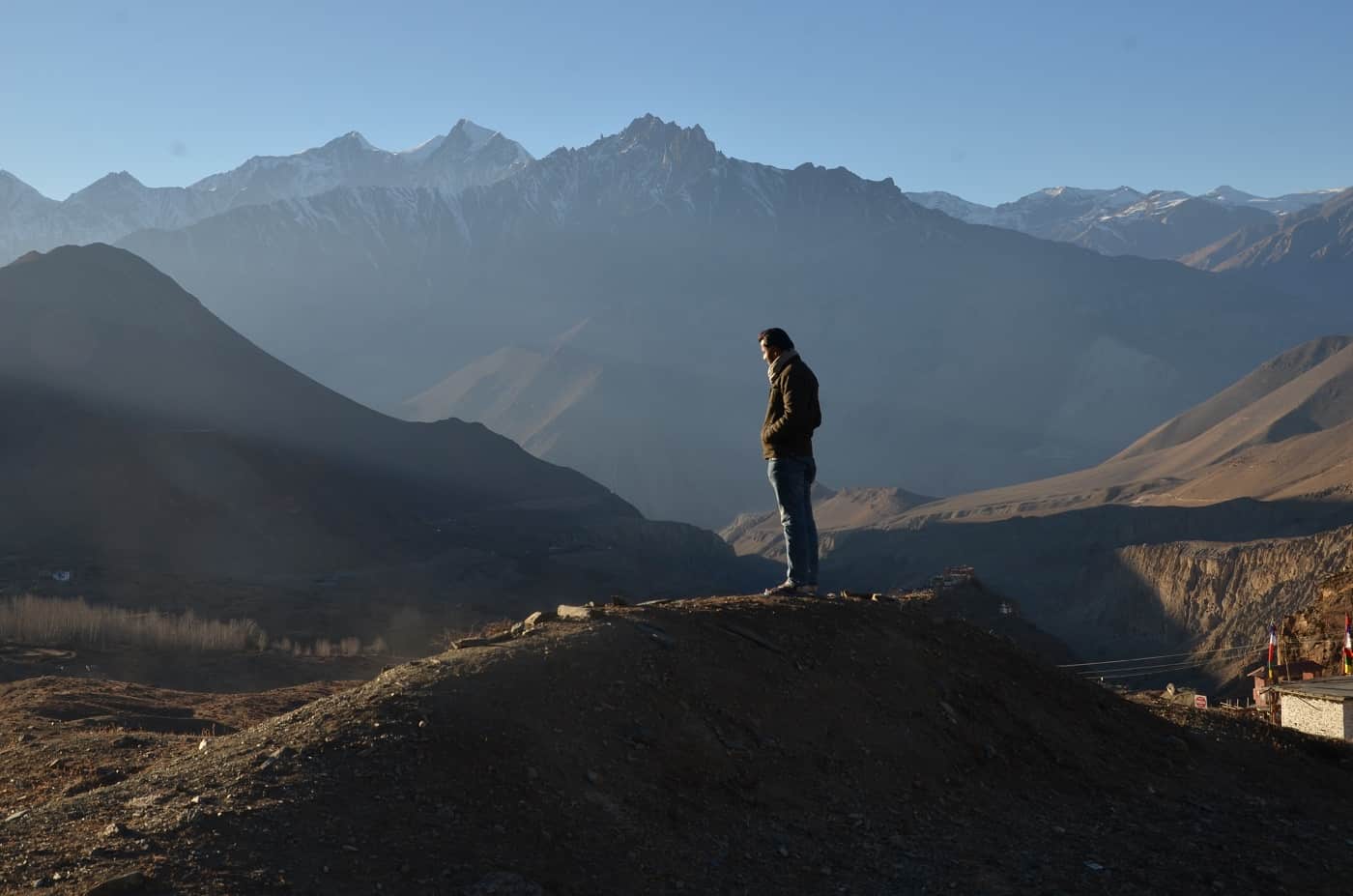

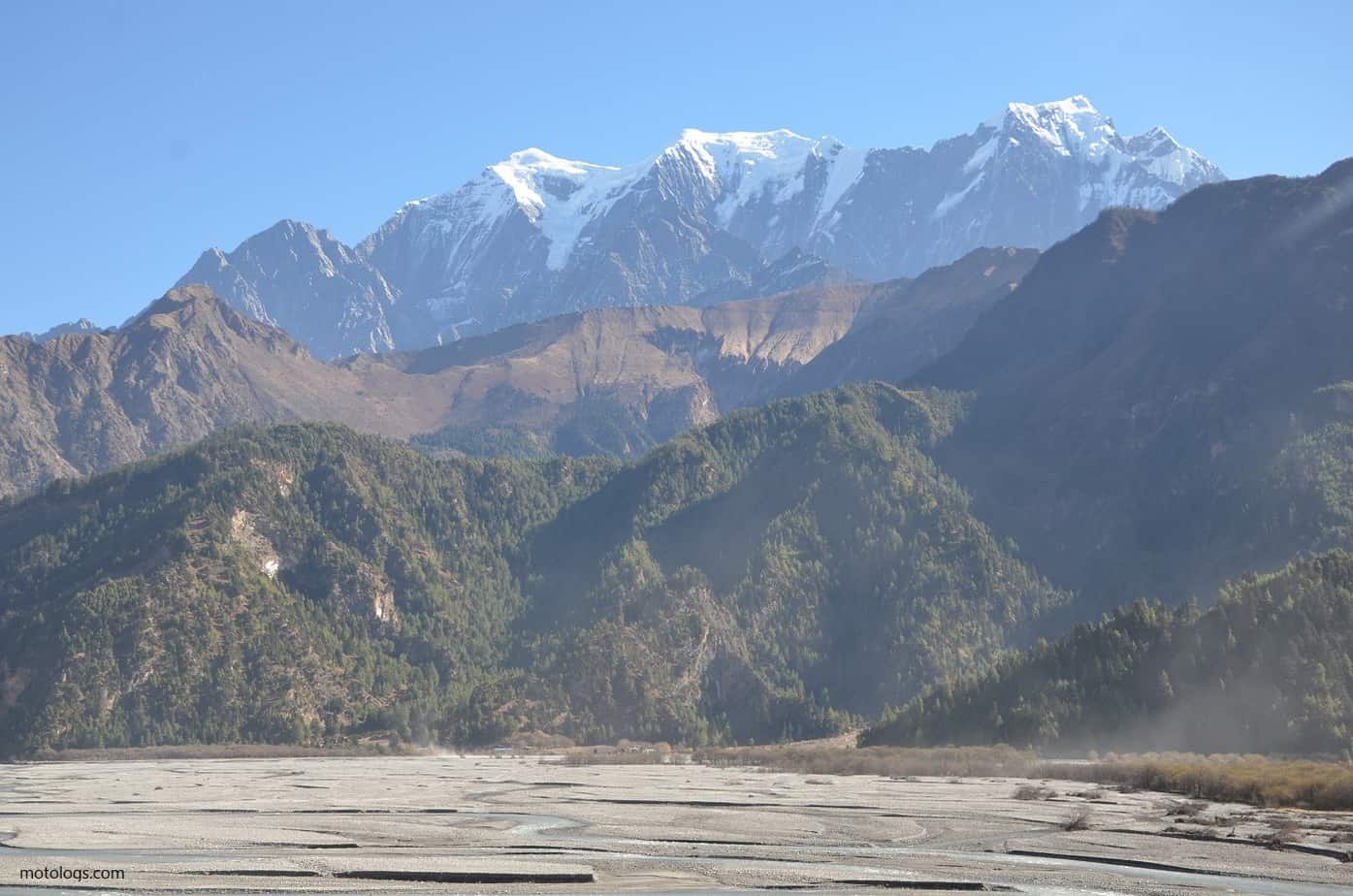
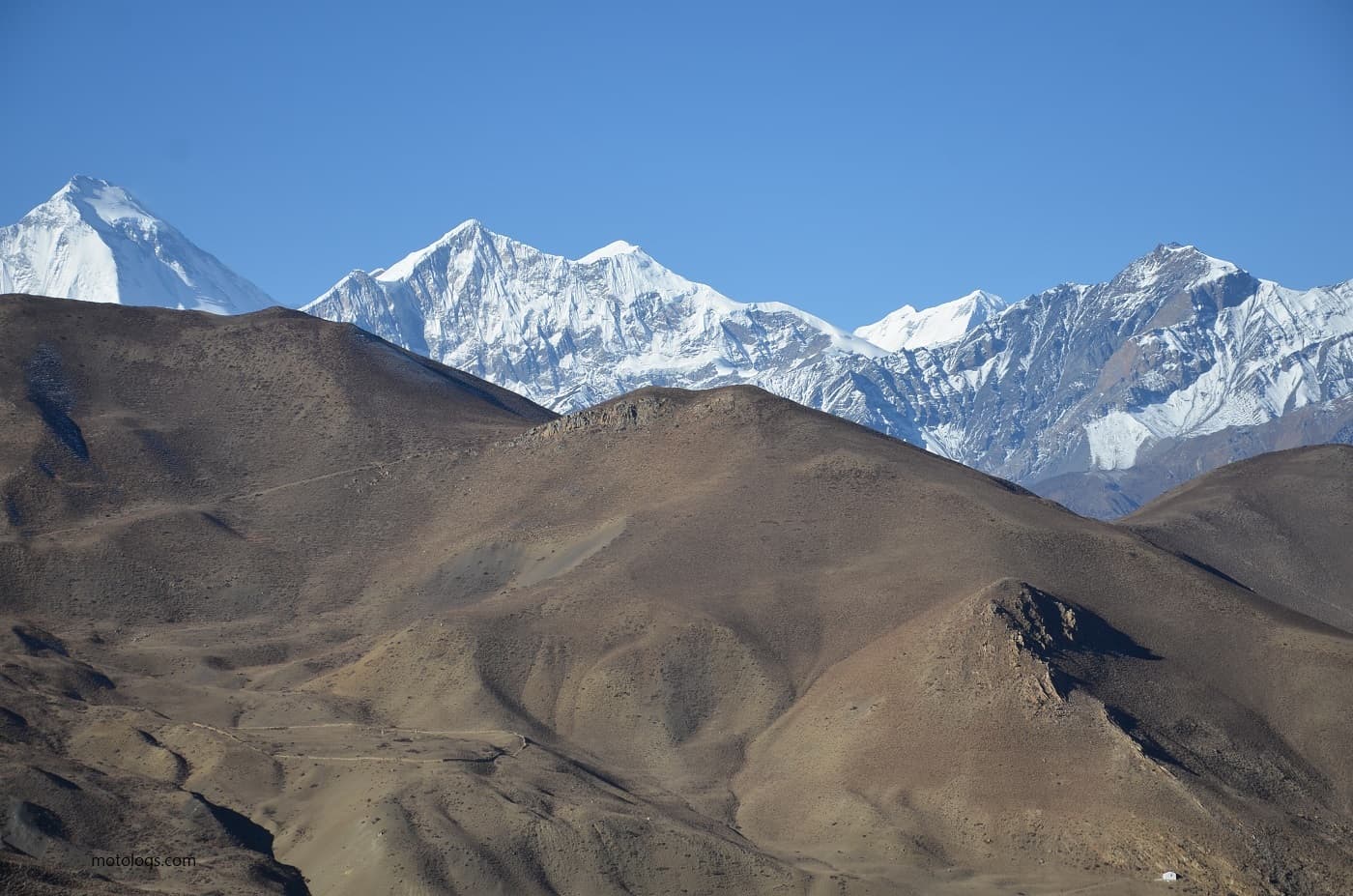
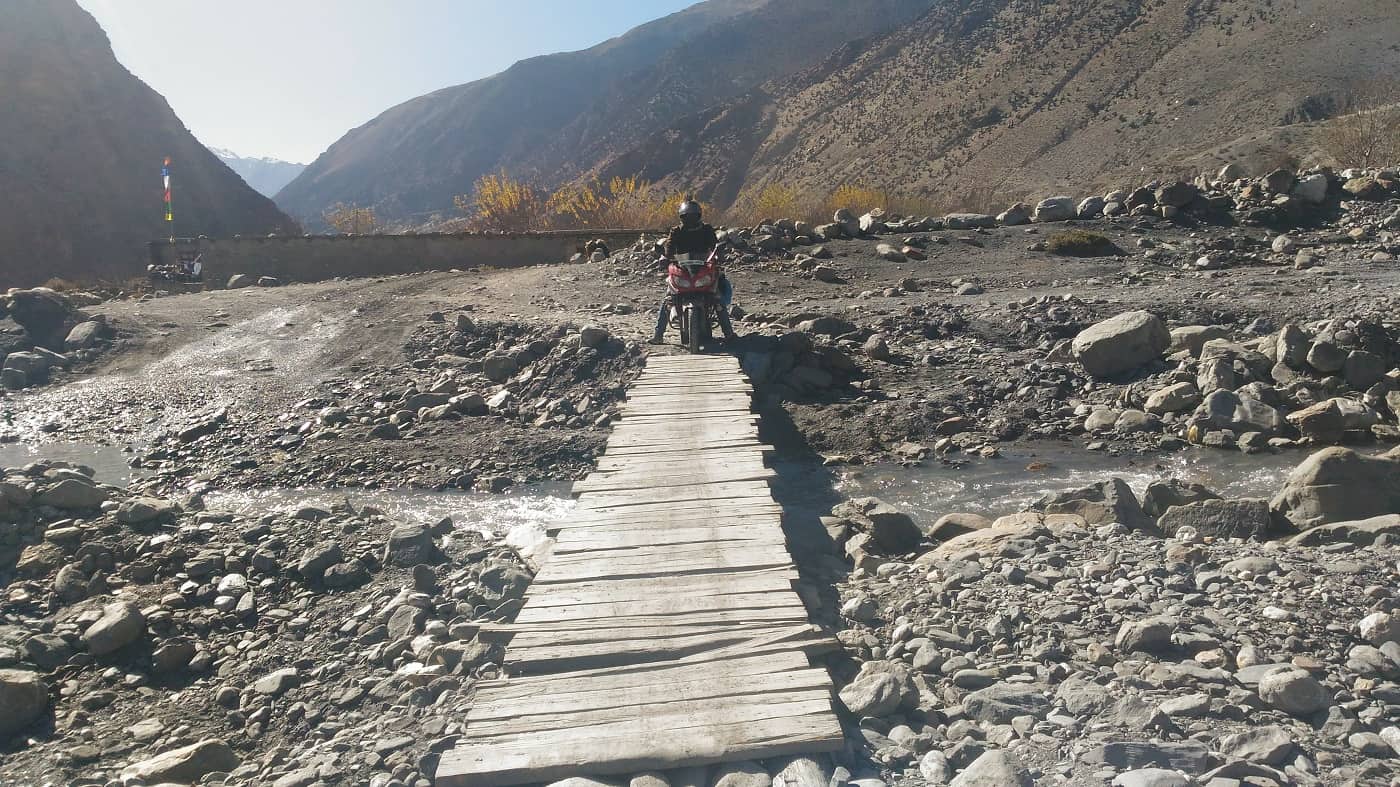
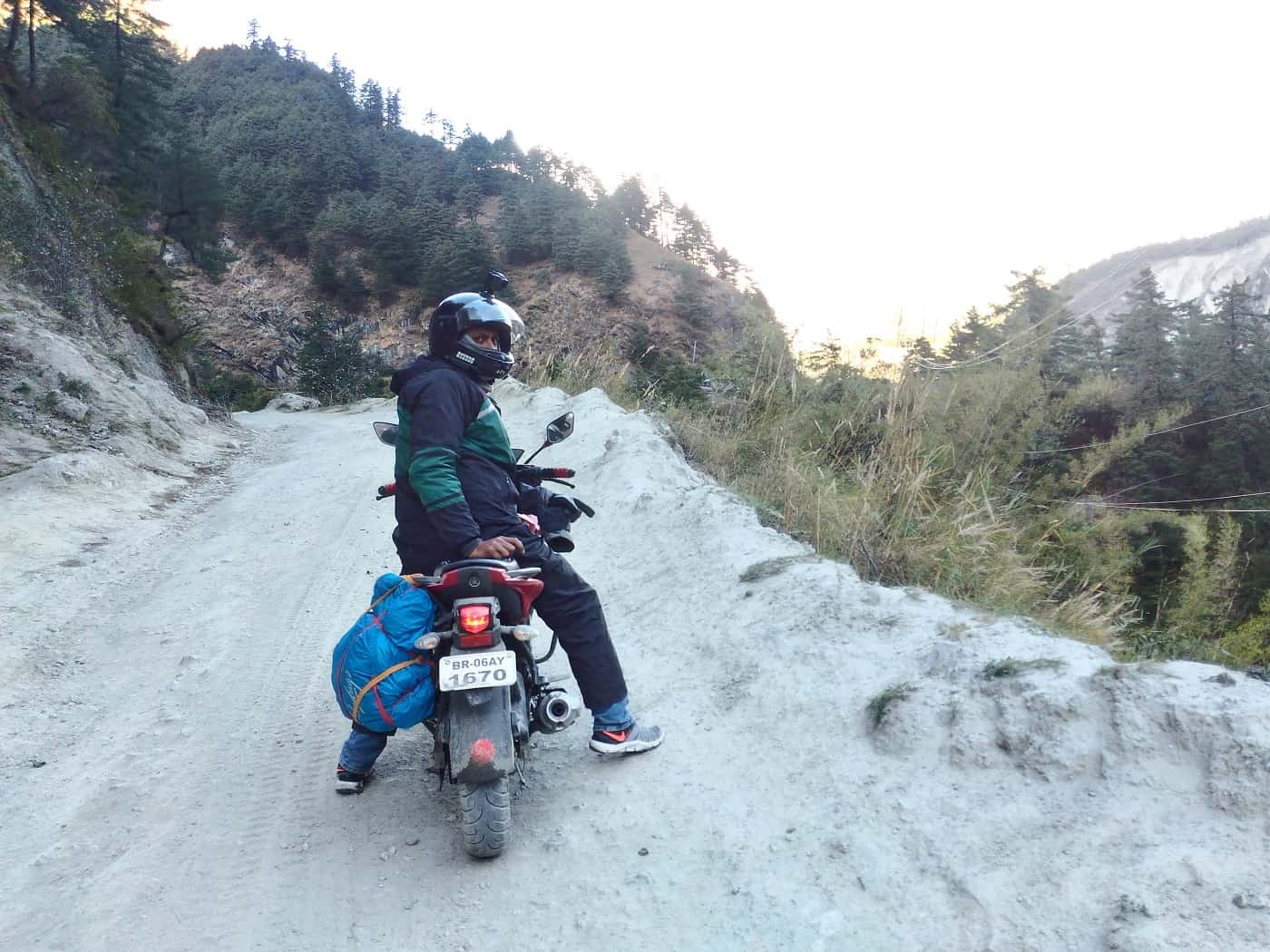
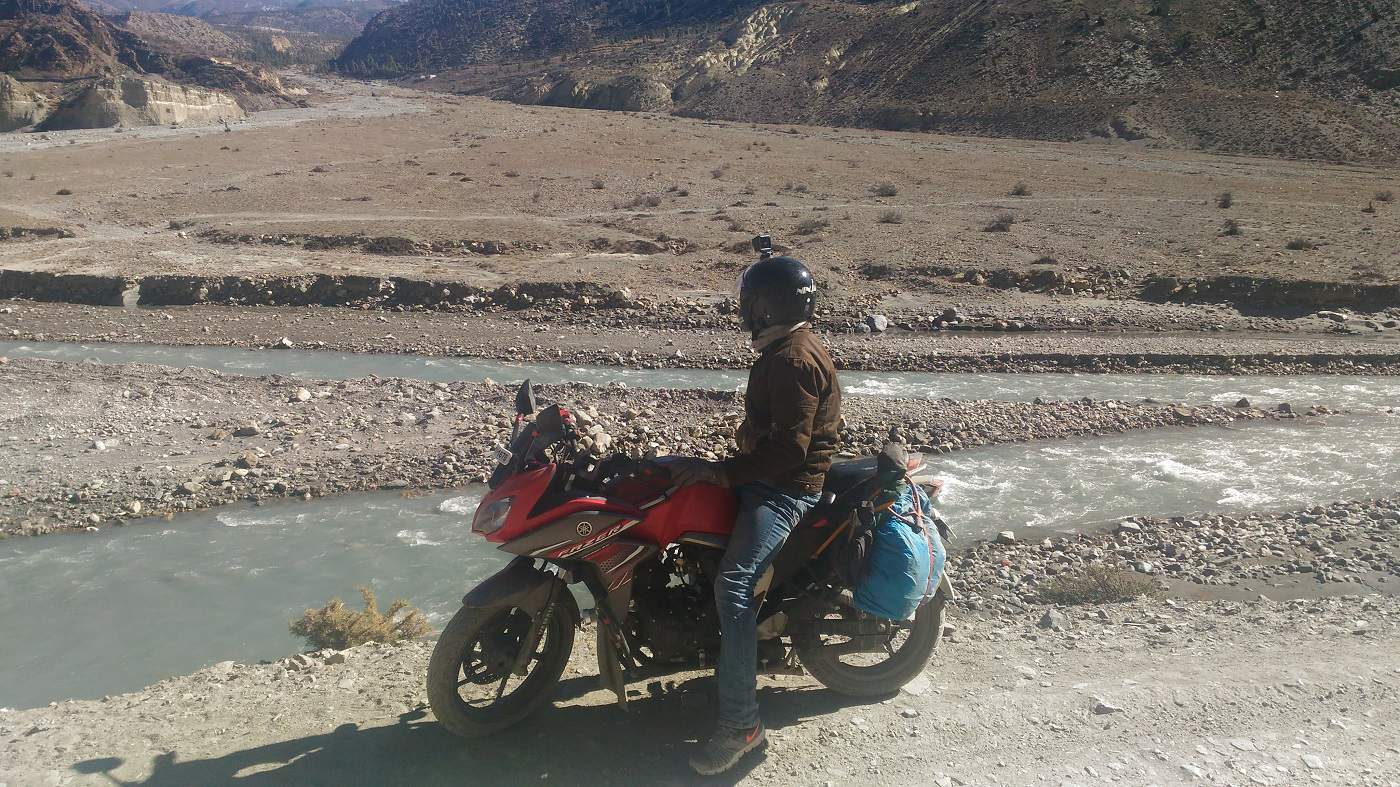
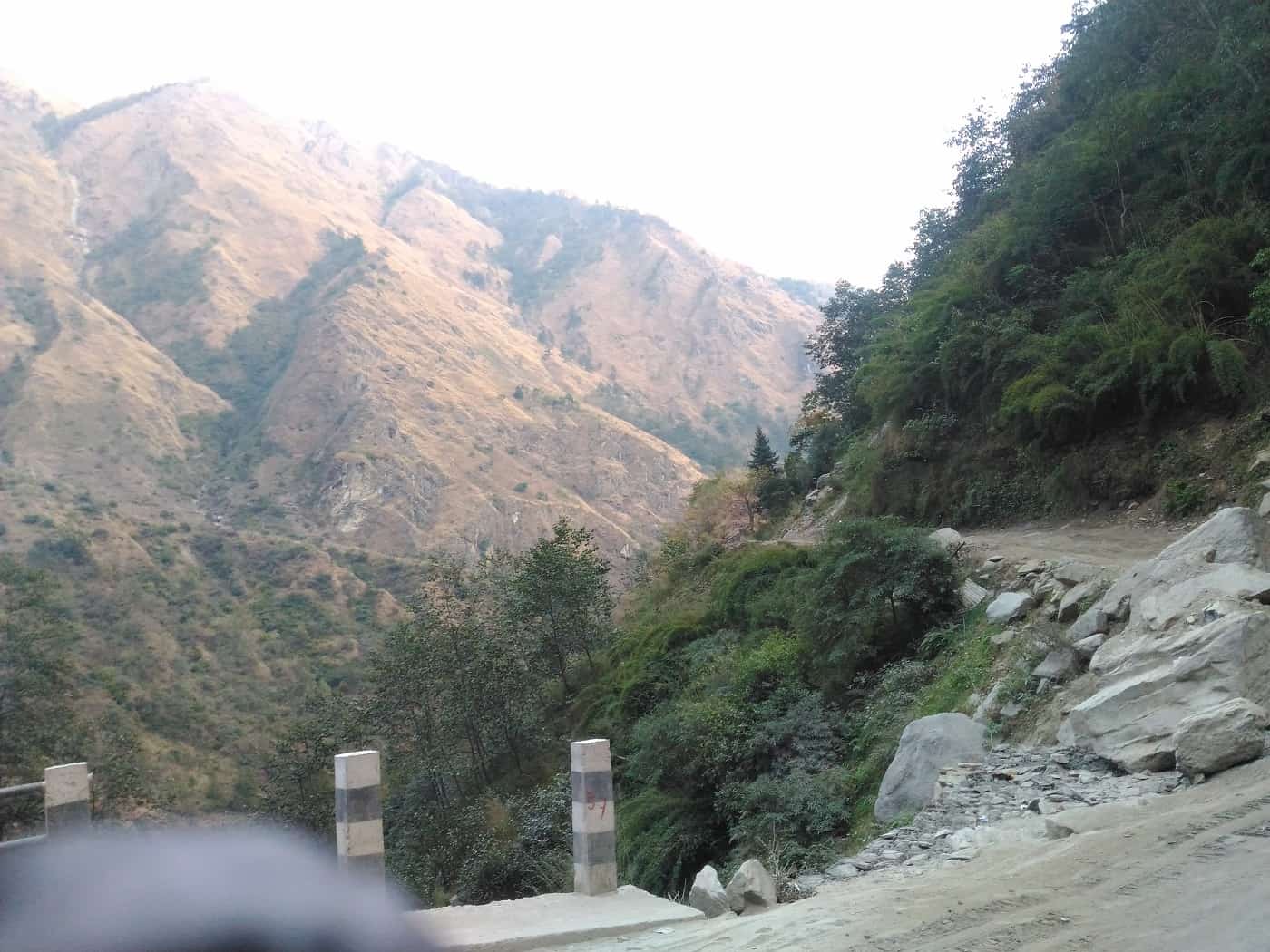
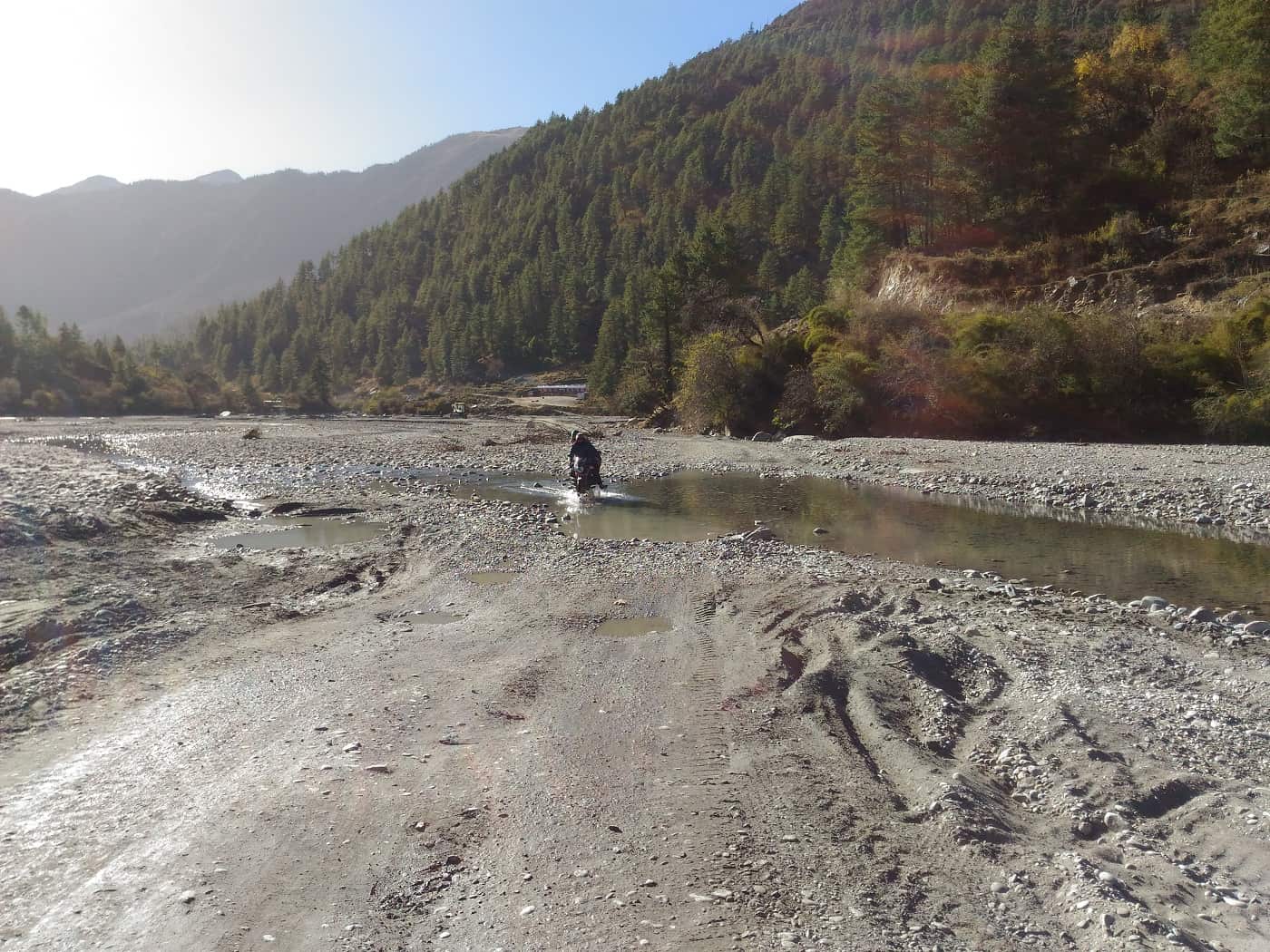
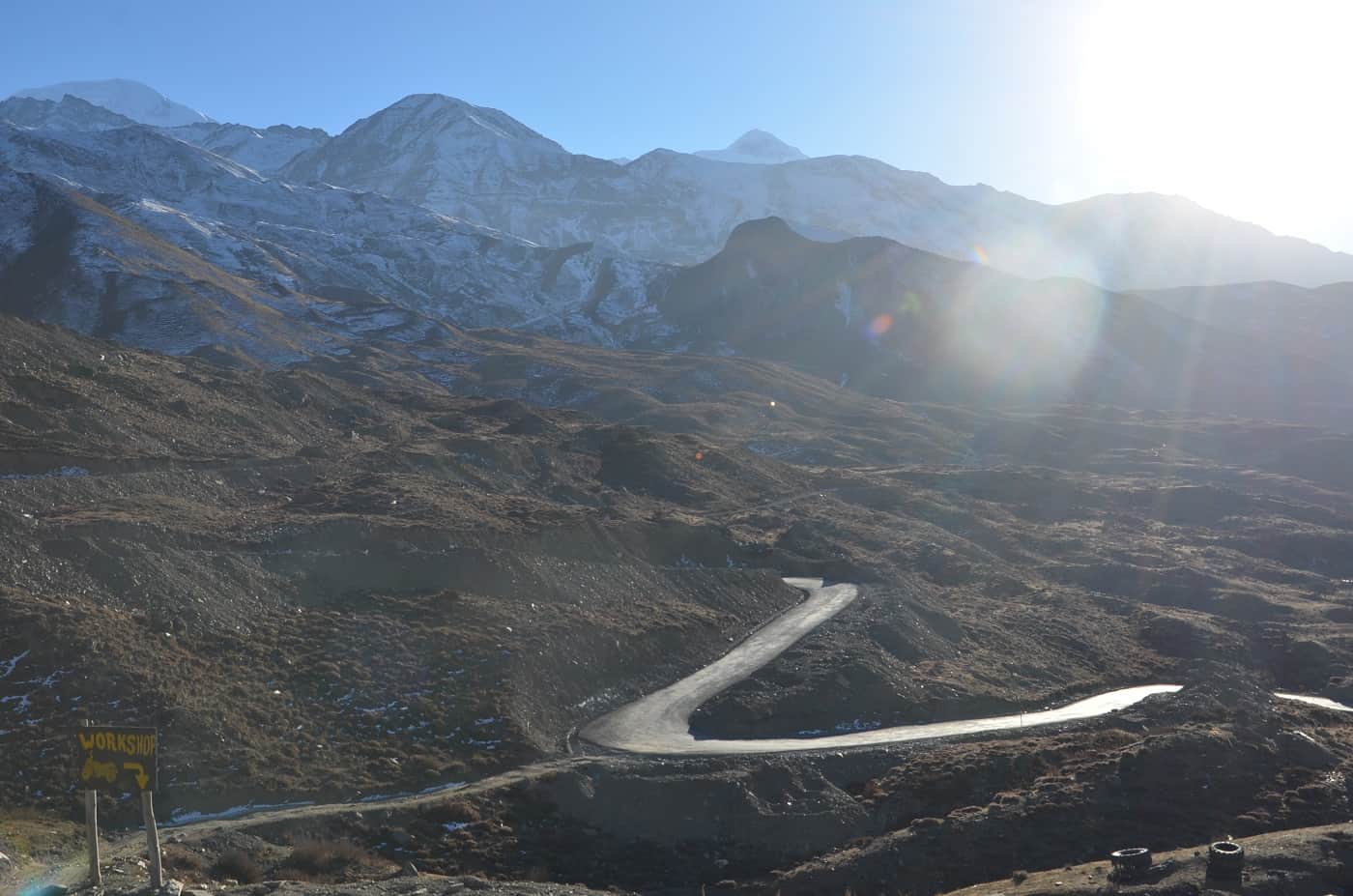
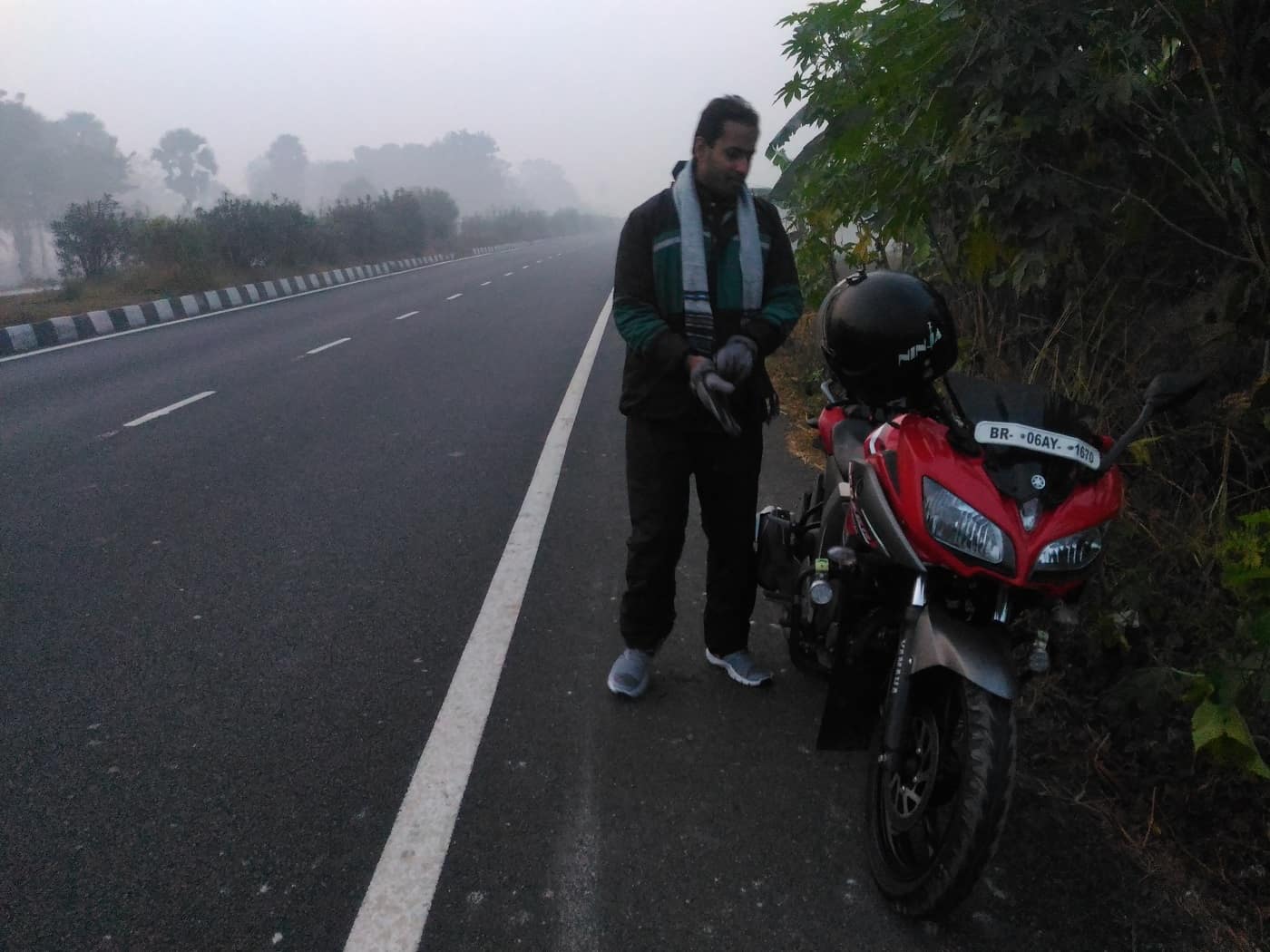
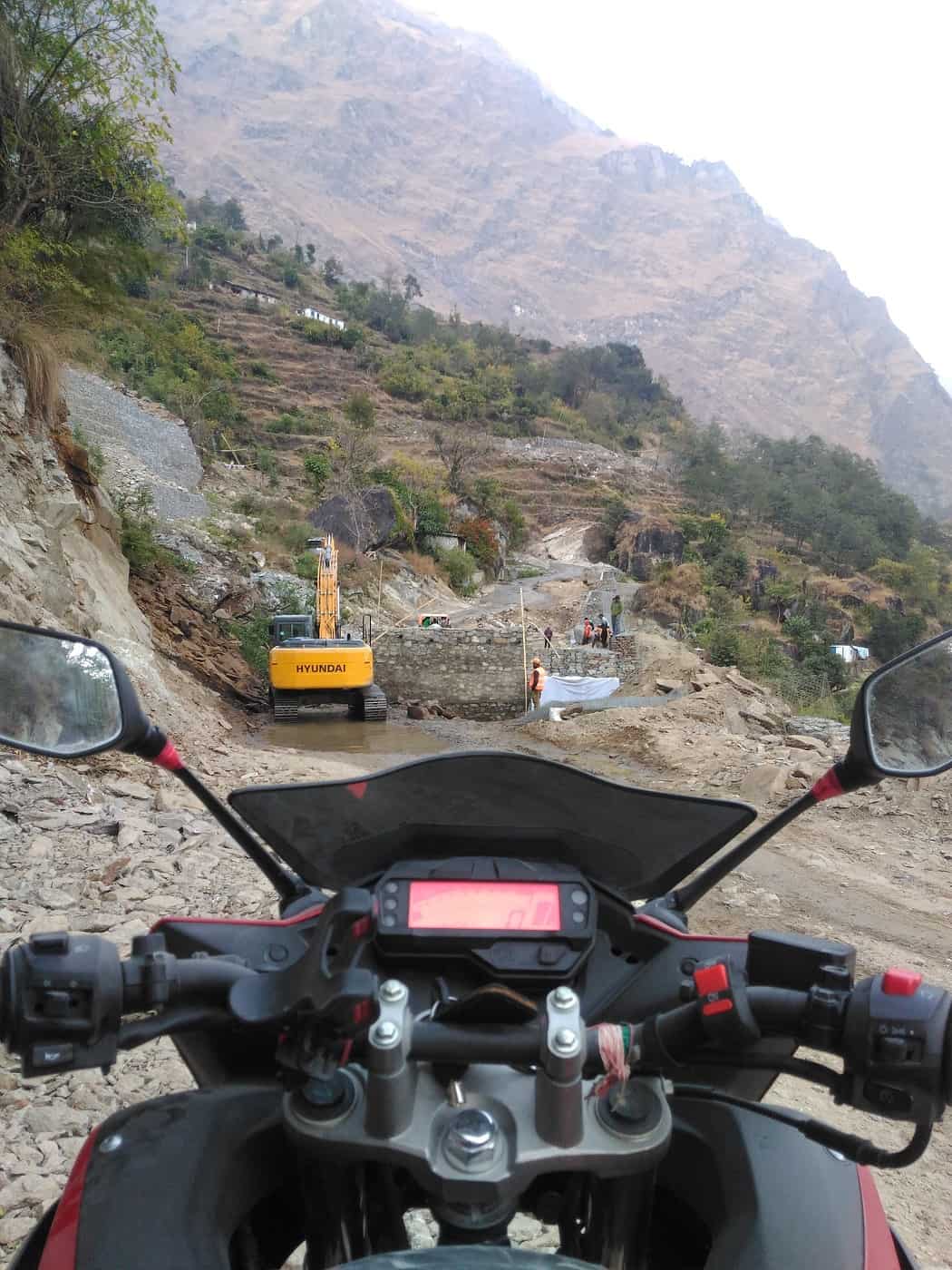
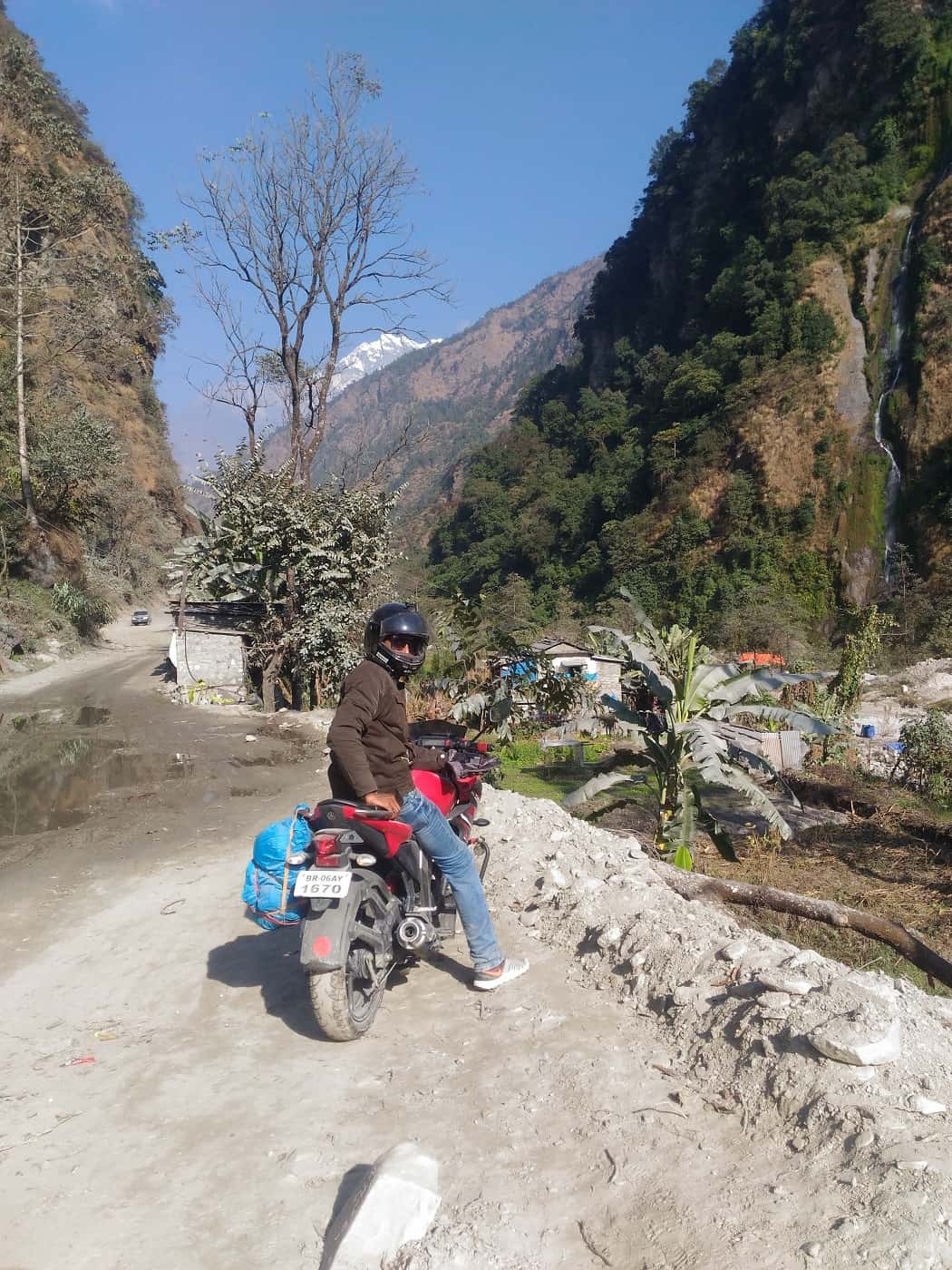

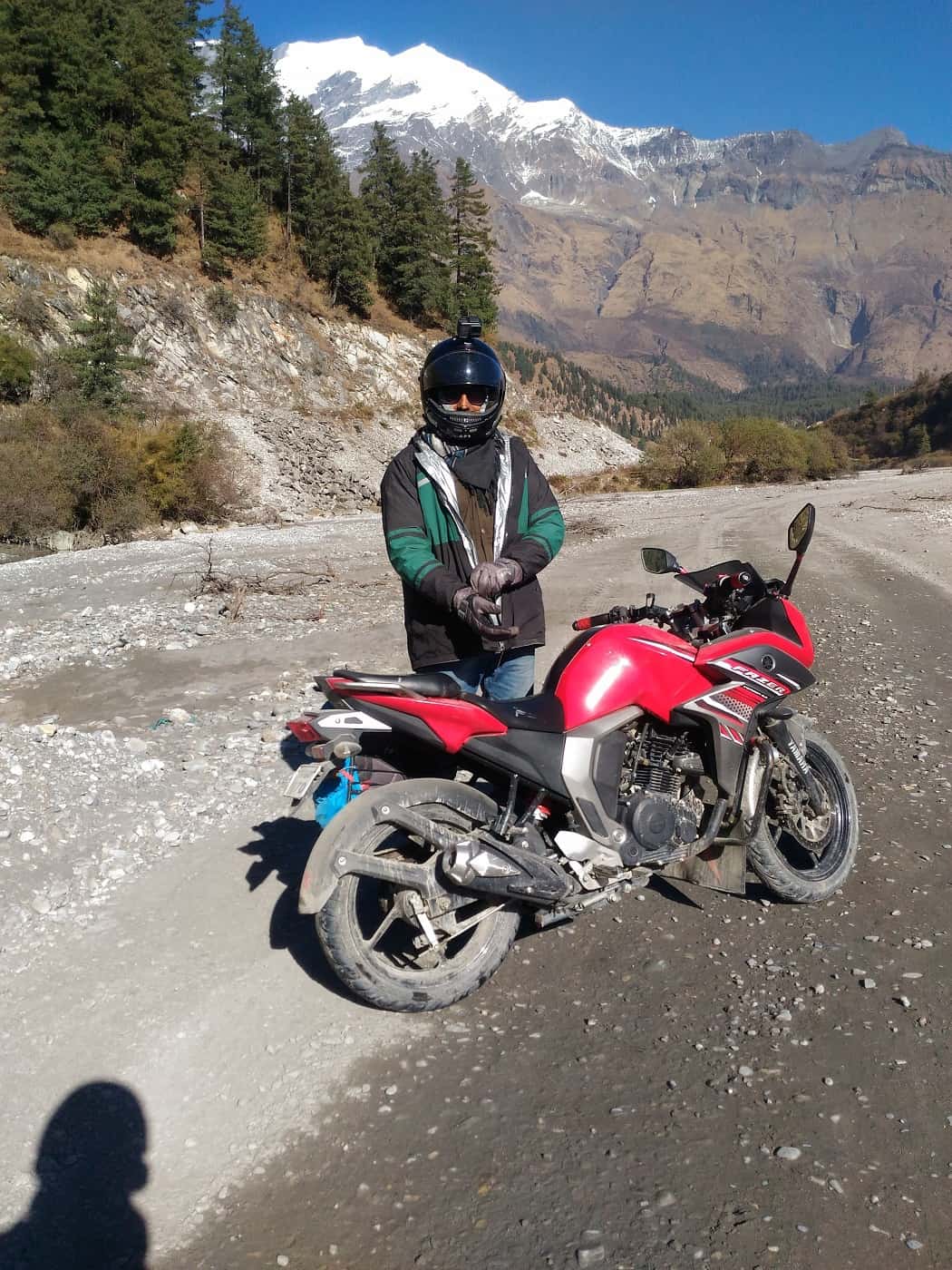
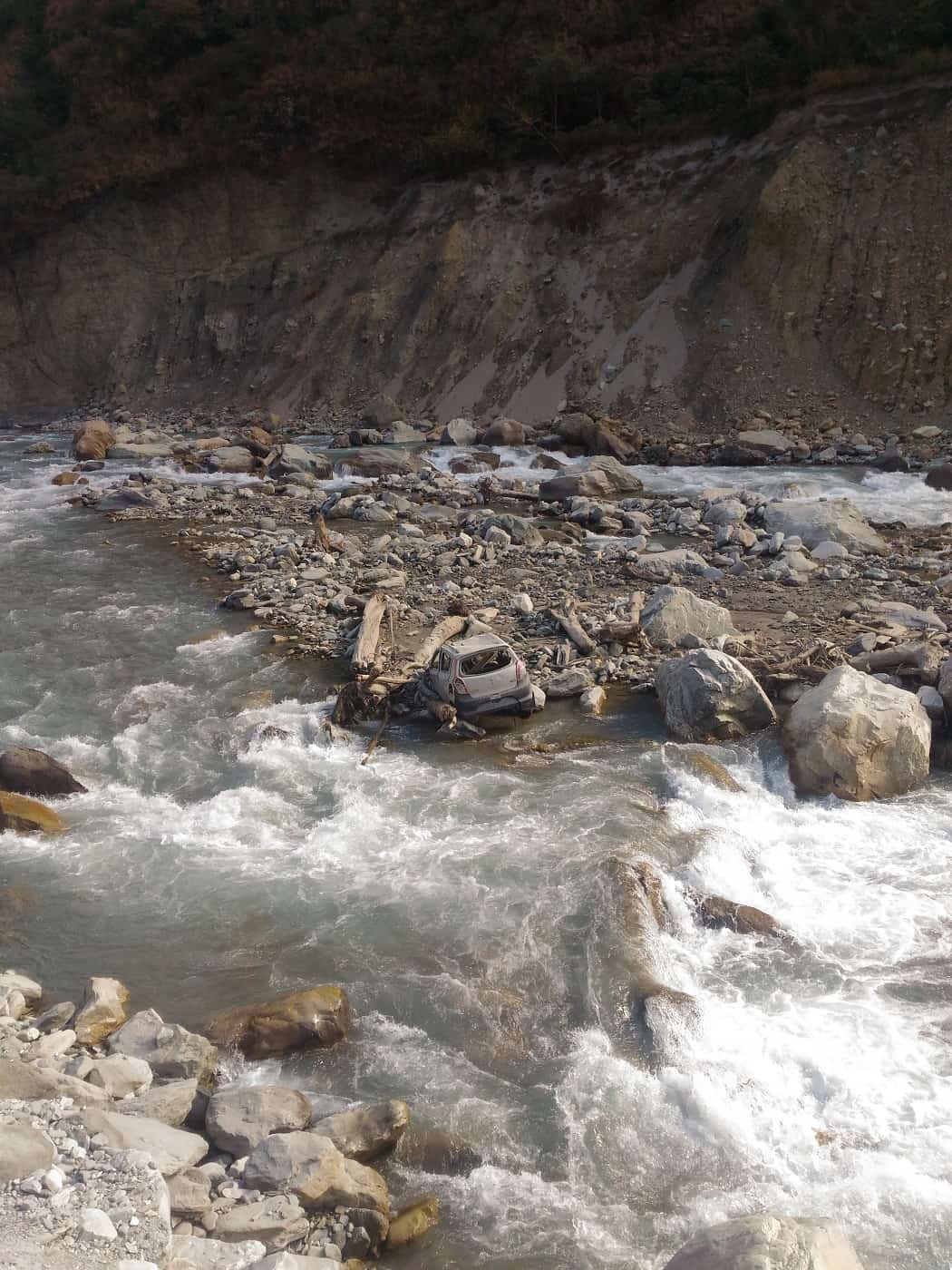
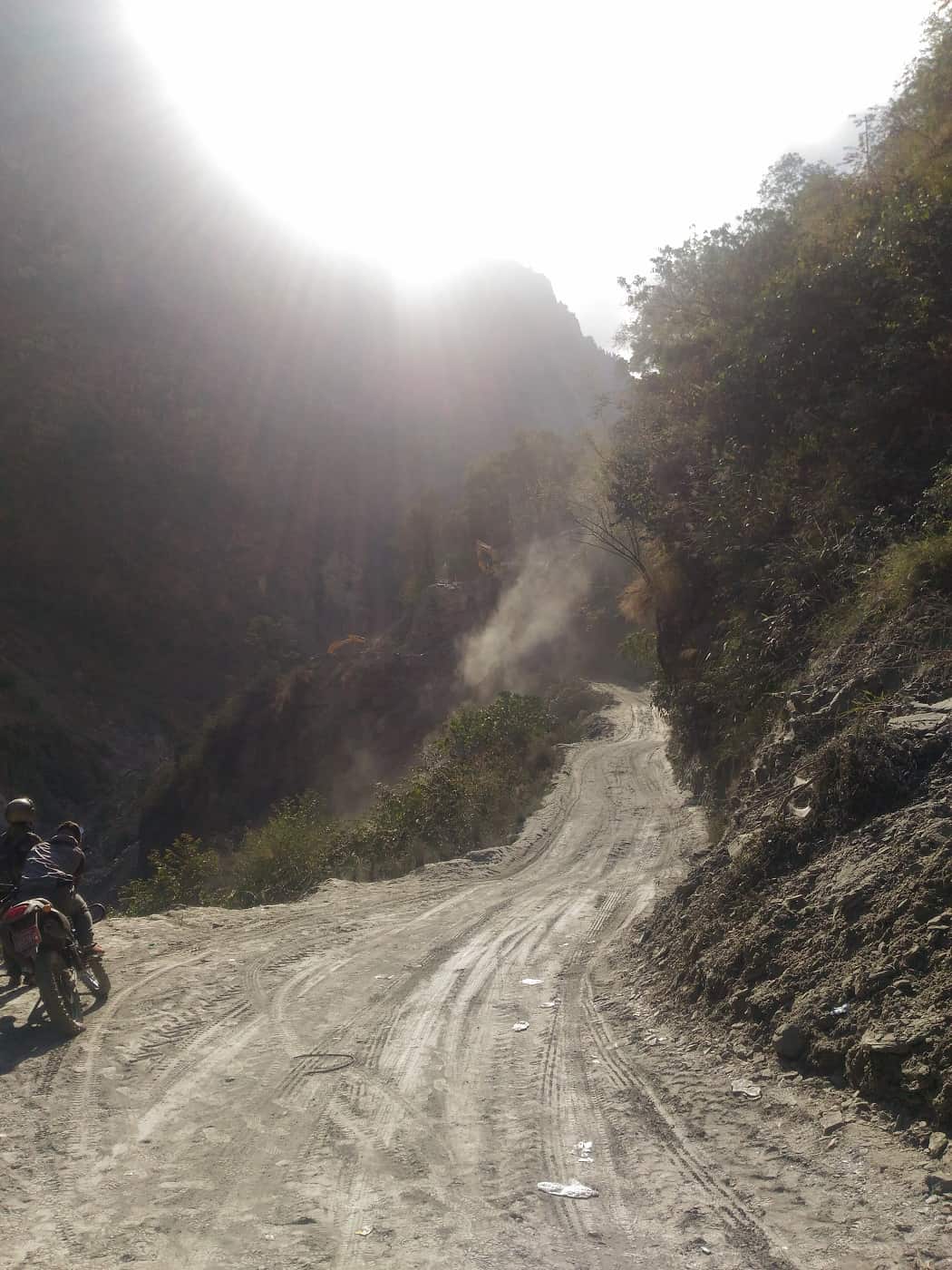
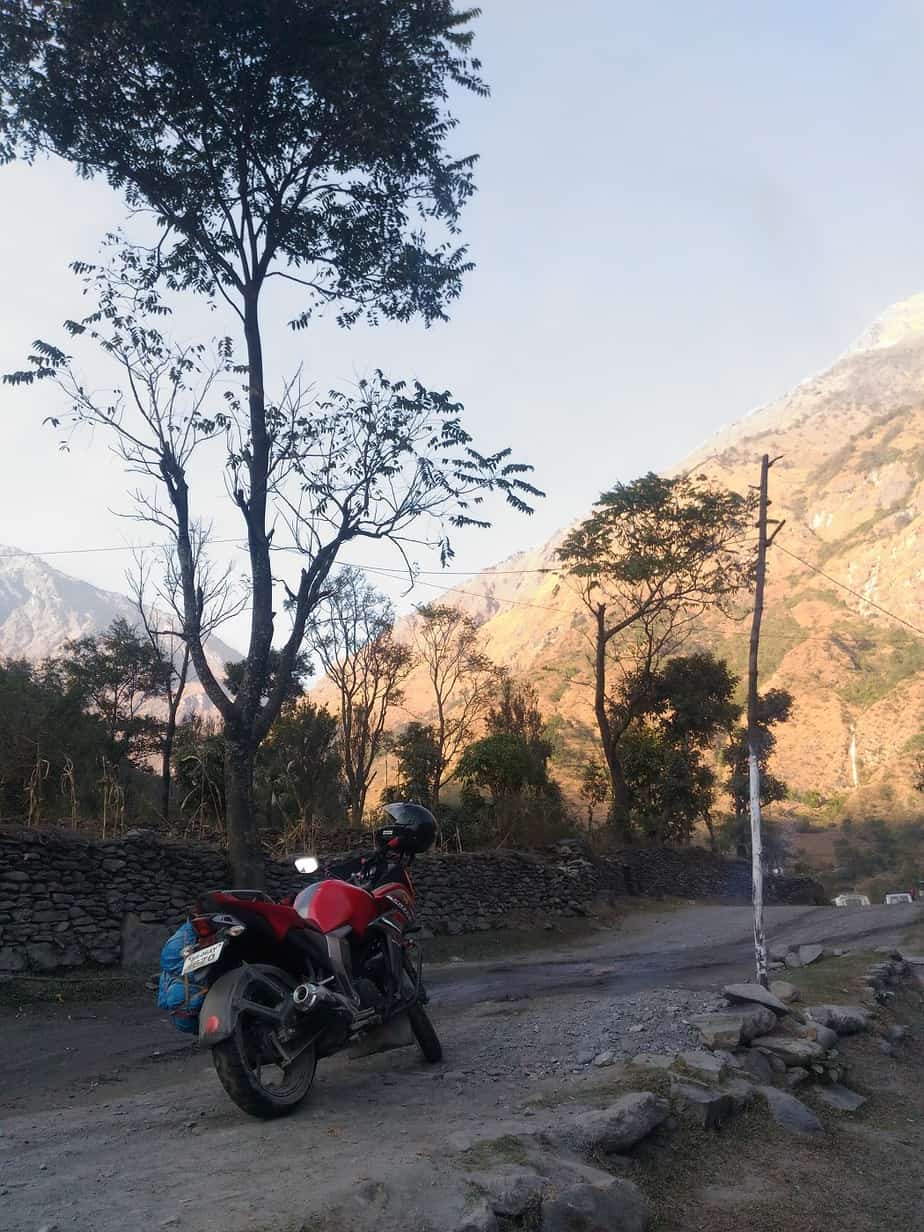
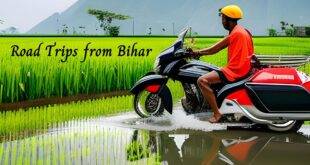
Is Nepal open for tourists now? I want to visit Muktinath by road.
Nepal is open for all fully vaccinated tourists by road and air. You should wait for a month to do the Muktinath road trip as roads will be bad because of the receding monsoon right now.
Super information Sir, thank you
How to contact you
Email me @ [email protected]
very true and a good travelogue, heart felt thank you very much